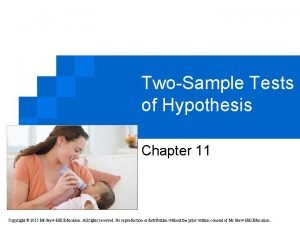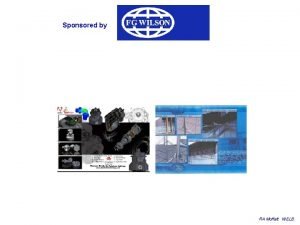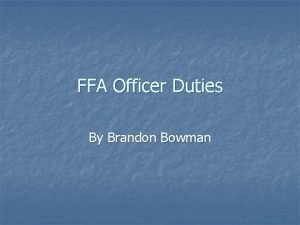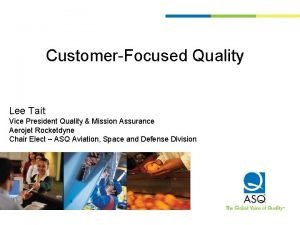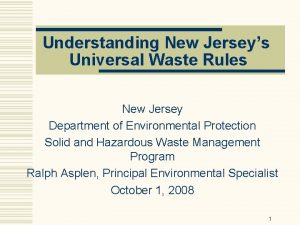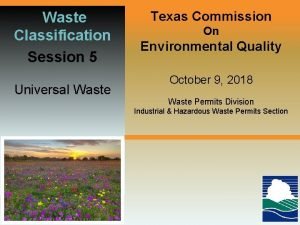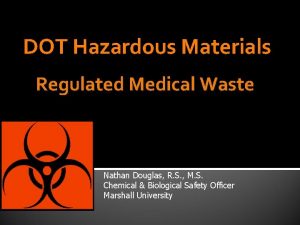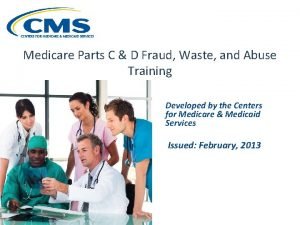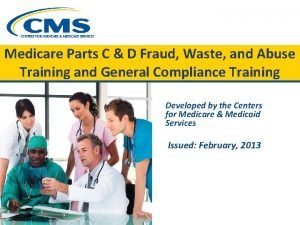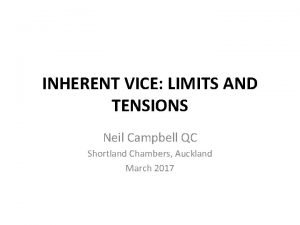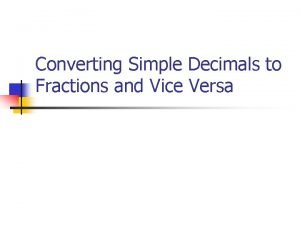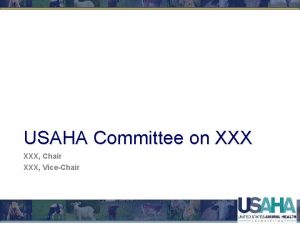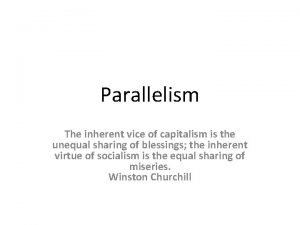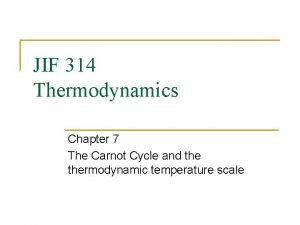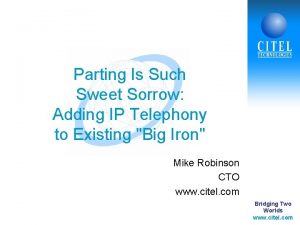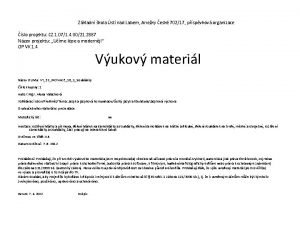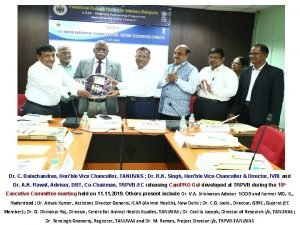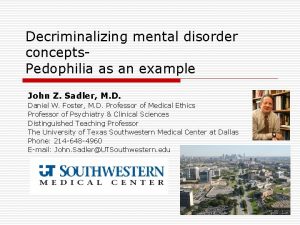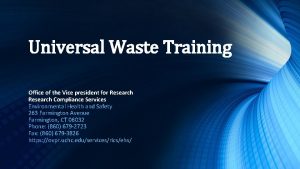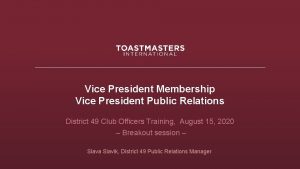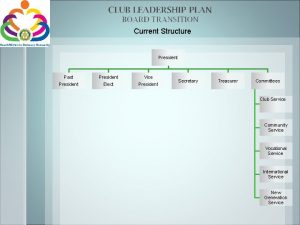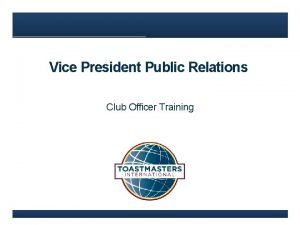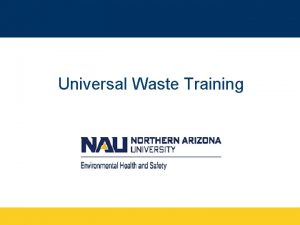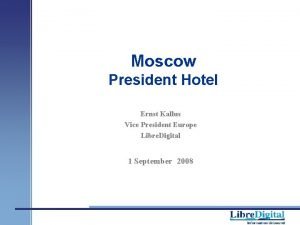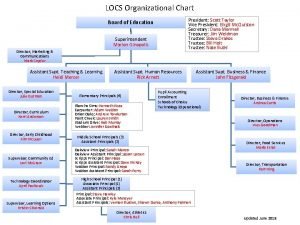Universal Waste Training Office of the Vice president





































- Slides: 37

Universal Waste Training Office of the Vice president for Research Compliance Services Department of Environmental Health and Safety 263 Farmington Avenue, Farmington, CT. Phone: (860) 679 -2723 Fax: (860) 679 -3826 ors. uchc. edu

Training Objectives § What is a Universal Waste? § Universal Waste- Batteries § Universal Waste- Lamps § Universal Waste- Mercury-Containing Equipment § Universal Waste- Used Electronics § Universal Waste- Pesticides § Universal Waste- Emergency Response Procedures

What is a Universal Waste?

Universal Waste Rule § Universal wastes refer to common items such as batteries and fluorescent lamps that contain mercury and/or other toxic metals. § Generated in a wide variety of settings other than the industrial settings usually associated with hazardous wastes. § In the past, improper disposal in municipal incinerators and landfills has led to environmental contamination.

Universal Waste Rule- Goals of the Universal Waste Rule include: § To encourage resource conservation while ensuring adequate protection of human health and the environment § To encourage recycling of batteries, thermostats and other mercurycontaining equipment, pesticides, lamps and used electronics § To provide incentives for individuals and organizations to collect and manage the unregulated portions of these universal waste streams using the same systems developed for the regulated portion, thus removing them from the municipal waste stream

Universal Waste- Types § Batteries § Lamps § Mercury-Containing Equipment § Used Electronics § Certain Pesticides

Universal Waste- Hazards HAZARDS DESCRIPTIONS UNIVERSAL WASTE TYPE(S) Corrosive The electrolyte in a battery is corrosive and can burn the skin or eyes, eat holes in clothing, or even etch a concrete floor. Batteries, Pesticides Flammable Batteries can emit flammable, hydrogen gas which ignites easily and can cause a fire or explosion if allowed to accumulate in a small area. Batteries Electrical Shock Electrical shock may occur given the type of current (AC or DC), the amount of current (determined by the voltage of the source and the resistance of the tissues involved), and the pathway the electricity takes through the body. Batteries Toxic Batteries, lamps, mercury-containing equipment can contain metals (e. g. , mercury, lead, cadmium, ) that are toxic upon exposure Batteries, Lamps, Mercury. Containing Equipment, Used Electronics, Pesticides Weight Some batteries, like those used in forklifts, are heavy and require proper material handling equipment to lift them safely. Batteries, Used Electronics

Universal Waste- Training § UConn Health is a large quantity handler of universal waste (i. e. , the campus exceeds the 5, 000 kilogram storage limit). § As a large quantity handler, UConn Health must train all employees handling universal waste to ensure that proper waste management and emergency procedures are followed.

Universal Waste- Accumulation Time Limits § A large quantity handler of universal waste may accumulate universal waste for no longer than one year from the date the universal waste is generated. § All universal wastes near the one year time limit must be shipped off campus to a destination facility capable of recycling universal wastes.

Universal Waste- Storage Requirements § Universal Waste must: Ø Be stored in a manner capable of preventing breakage and release to the environment Ø Be labeled with a “Universal Waste” sticker, marked with the appropriate waste type (e. g. , batteries, lamps, etc. ), and contain an accumulation start date. EH&S provides stickers upon request Ø Be stored in closed, structurally sound compatible containers capable of preventing leakage, spillage, or damage

Universal Waste- Recordkeeping Requirements § Handlers of universal waste must keep a record of each off-site shipment of universal waste. § The record may take the form of a log, invoice, manifest, bill of lading, movement document or other shipping document. § The handler must retain the disposal records for at least three years from the date of receipt of a shipment of universal waste.

Universal Waste- Batteries

Battery Bucket Collection Locations Surrounding Campus Locations Ø 400 Farmington Ave. Ø 1 st Floor – TIP Area by elevator Ø 2 nd Floor – TIP Area by elevator Ø 195 Farmington Ave. ØTBD ØMunson Road Ø 3 rd Floor – Telecom, and HVAC Office Ø 4 th Floor – Copy Room Cubicle P 4030 A Ø 21 South Road Ø 2 nd Floor – Copy Room

Battery Bucket Collection Locations Lower Campus Locations ØMARB Ø 1 st Floor – Dirty Utility Room Rehab Services Ø 2 nd Floor – Rear Elevator Area, and PACU Dictation Room Ø 3 rd Floor – 3118 -Soiled Utility Ø 4 th Floor – Copy Room, and 4031 -Mail Room ØAcademic Services Building Ø 3 rd Floor – Mail Room D 3103 ØOutpatient Pavilion Ø 3 rd Floor – East S 3104 Physical Therapy Charting Room, and West S 3612 Clean Supply Ø 6 th Floor – West S 6325

Battery Bucket Collection Locations Upper Campus Locations (pt 1) ØE-Building Ø 2 nd Floor – E 2052 (in Hall) Ø 6 th Floor – E 6036 ØL Building ØBasement – Light Maintenance LB 056 Ø 3 rd Floor – L 3092 Ø 6 th Floor – L 6062 A Ø 7 th Floor – L 7041 ØAcademic Building ØBasement – Housekeeping Office

Battery Bucket Collection Locations Upper Campus Locations (pt 2) ØC Building ØGround Floor – CG 141 ØUniversity Tower ØGround Floor – Scheduling Office Ø 1 st Floor – Dirty Utility Room Ø 2 nd Floor – Dirty Utility Room Ø 3 rd Floor – Dirty Utility Room Ø 5 th Floor – Dirty Utility Room Ø 6 th Floor – T 6348 ØConnecticut Tower Ø 7 th Floor – Copy Area near 3 Bank Elevators, and Mailroom North End near Stairwell

Introduction-Batteries § Battery- a device consisting of one or more electrically connected electrochemical cells which is designed to receive, store, and deliver electric energy. § Examples include, but are not limited to: ØLithium Ion Batteries (e. g. , computers, cordless tools, cellular phones, etc. ) ØLead Acid Batteries (e. g. , automobiles, uninterruptible power supply (UPS), etc. ) ØNickel Cadmium Batteries (e. g. , power tools, emergency lighting, etc. )

Management- Batteries BATTERY TYPE CONTAINER AND LABEL DISPOSAL Individual alkaline batteries can be disposed of in the normal trash. They are not considered Universal Waste. Electronically submit the (Chemical Waste Pick-up Form) click the embedded e-mail hyperlink to submit https: //ovpr. uchc. edu/services /rics/ehs/ (e. g. , lead-acid vehicle batteries) Tape the terminals. Label the battery with a “Universal Waste” sticker, mark the checkbox on the label for “Universal Waste Battery (ies)” and write the “Accumulation Start Date. ” Electronically submit the (Chemical Waste Pick-up Form) click the embedded e-mail hyperlink to submit https: //ovpr. uchc. edu/services /rics/ehs/ Non-Automotive Batteries (e. g. , lead-acid, nickel-cadmium, silver oxide, lithium-ion, mercury, magnesium, etc. ) Electronically submit the Place batteries in individual plastic bags or tape the terminals. Label (Chemical Waste Pick-up Form) click the embedded e-mail the bag or battery with a “Universal Waste” sticker, mark the checkbox on the label for “Universal Waste Battery (ies)” and write the hyperlink to submit “Accumulation Start Date. ” https: //ovpr. uchc. edu/services /rics/ehs Alkaline Batteries

Universal Waste- Lamps

Introduction- Lamps § Mercury Containing Lamp- the bulb or tube portion of an electric lighting device that may contain mercury, lead, or other hazardous chemicals. § Lamps must be managed in a way that prevents a release to the environment. § Examples include, but are not limited to: Ø Fluorescent Ø High intensity discharge Ø Neon Ø Mercury vapor Ø High pressure sodium Ø Metal halide lamps

Management- Lamps 1. Place the lamp(s) in a closed container immediately after they are removed from service. Ballasts must not be stored with the lamps. Ballasts are collected by EH&S separately. 2. Label the container with a “Universal Waste” sticker. 3. Mark the checkbox on the label for “Universal Waste- Lamp(s). ” 4. Enter the “Accumulation Start Date” with the date the first bulb is added to the container. 5. Submit a work order with Facilities Development & Operations-(860 -679 -2125) or via https: //health. uconn. edu/facilities/ Famis; with the building and room number for removal.

Storage- Lamps § Storage areas must be secure to prevent damage and breakage of lamps. § Storage areas should be inspected weekly to ensure containers are properly closed, labeled, and in compliance with the one year accumulation time limit. § The number of storage containers must be kept to a minimum. § Containers must be moved to the central storage location when full or near the one year accumulation limit.

Unacceptable Storage- Lamps

Universal Waste. Mercury Containing Equipment

Introduction- Mercury Containing Equipment § Mercury-Containing Equipment- a device or part of a device that contains elemental mercury integral to its function. § Examples include, but are not limited to: Ø Mercury Thermostats Ø Mercury Thermometers Ø Mercury Switches ØMercury Barometers/Manometers § § Do not remove mercury ampules from switches or thermostats Contact EH&S before moving barometers/manometers

Management- Mercury Containing Equipment 1. Place the mercury containing device(s) in a container with a tight-fitting cap or lid. 2. Label the container with a “Universal Waste” sticker. 3. Mark the checkbox on the label for “Waste. Mercury Thermostat(s). ” 4. Write the “Accumulation Start Date. ” 5. Electronically submit the (Chemical Waste Pick-up Form) click the embedded e-mail hyperlink Gottlieb@uchc. edu to submit https: //ovpr. uchc. edu/services/rics/ehs/

Universal Waste- Used Electronics

Introduction- Used Electronics §Used Electronics- devices or components thereof that contain one or more circuit boards or a cathode ray tube and is used primarily for communication, data transfer or storage, or entertainment purposes §Examples include, but are not limited to: ØComputers/Computer Monitors ØCopying Machines ØMicrowaves ØScanners ØPrinters ØTelevisions ØCellular and Portable Telephones

Management- Used Electronics 1. The Office of Logistics Management (OLM) will come to your location to collect your used electronics and E-waste. 2. Waste electronics should not be stored by departments for any length of time. As soon as you identify equipment as surplus, please fill out an LM-2 surplus removal form in the Electronic Forms Workflow (EFW) system to authorize OLM to remove it. 3. This function is provided as a free service and units are generally not charged for LM-2 forms, even though the FOAPL is a required field. Contact OLM at (860) 679 -1956 or (860) 679 -3759 with any questions. 4. Surplus will be sorted by OLM and electronic waste will be collected for removal by a contractor on a monthly basis.

Storage- Used Electronics § Used electronics must be: Ø Handled, stored and transported in a manner that maintains the reuse or recyclability of the used electronic (i. e. , no shredding, crushing, heating, etc. ) Ø Stored in a building with a roof and four walls or in a cargo carrying portion of a truck, in a manner to prevent used electronics from being exposed to the environment.

Universal Waste- Pesticides

Introduction- Pesticides § Pesticide- any substance or mixture of substances intended for preventing, destroying, repelling, or mitigating any pest, or intended for use as a plant regulator, defoliant, or desiccant § Universal Waste Regulations apply to : Ø Recalled pesticides Ø Stocks of other unused pesticide products that are collected and managed as part of a waste pesticide collection program.

Management- Pesticides § Some pesticides contain multiple chemical constituents. In order to ensure proper disposal, EH&S prefers that employees manage all Universal Waste Pesticides as Hazardous Waste, until EH&S can prove otherwise. § Every waste pesticide container must: Ø Be labeled with a red “Hazardous Waste” sticker or tag Ø Contain full names of each chemical in the container (NO SYMBOLS OR ABBREVIATIONS). Ø Have a tight-fitting cap or lid. Waste containers must be closed (i. e. no funnels) when not actively adding waste. Ø Be stored with compatible chemicals Ø Be stored in a secure location at or near a green “Satellite Accumulation Area” sign

Universal Waste- Emergency Procedures

Emergency Response Procedures- Universal Waste (e. g. , broken mercury thermostat, a leaking battery, pesticide spill, etc. ) 1. Relocate to a safe location. 2. If possible, close the door(s) to the area. 3. Call 7777 or 911. 4. If possible, post a “NO ENTRY” sign on the door to prevent others from a entering the area. 5. Do not re-enter area until instructed to do so by emergency personnel.

Emergency Procedure- Broken Lamp 1. Relocate to a safe location. 2. Contact EH&S. If clean-up poses an exposure hazard, dial 2723 or 7777. 3. EH&S will collect spill debris appropriately. Do not discard in trash!! 4. DO NOT VACUUM- Vacuuming could spread mercury-containing powder/vapor. 5. If no exposure-scoop up bulb debris with cardboard and/or wet paper towels/wipes and place in a sturdy container with a tight-fitting cap or lid. DO NOT HANDLE BROKEN GLASS WITH BARE HANDS. 6. Label and manage the container as Hazardous Waste and dispose of through EH&S.

Consultation § Environmental Health and Safety Office: 860 -679 -2723 Ø Contact: Ø Robert Gottlieb, Chemical Safety Officer Ø Gottlieb@uchc. edu Ø Cell: (203)-317 -1551
 Ducks unlimited checks
Ducks unlimited checks Vice president training
Vice president training Vice president training
Vice president training Vice president duties in a club
Vice president duties in a club Mary jo fitzpatrick is the vice president
Mary jo fitzpatrick is the vice president Microsoft fargo campus
Microsoft fargo campus Age of vice president
Age of vice president Senior regional vice president
Senior regional vice president Vpm membership
Vpm membership Ffa advisor symbol
Ffa advisor symbol Senior regional vice president
Senior regional vice president Senior regional vice president
Senior regional vice president Senior regional vice president
Senior regional vice president Where are ffa officers stationed
Where are ffa officers stationed Vice president quality
Vice president quality Universal waste examples
Universal waste examples Texas universal waste
Texas universal waste Executive office of the president
Executive office of the president Executive office of the president
Executive office of the president Dot regulated medical waste training
Dot regulated medical waste training Fraud waste and abuse training answers
Fraud waste and abuse training answers Fraud waste and abuse training answers
Fraud waste and abuse training answers Vyklad
Vyklad Inherent vice definition
Inherent vice definition Vice lord meaning
Vice lord meaning Extremism is no vice
Extremism is no vice Changing decimals to fractions and vice versa
Changing decimals to fractions and vice versa Quais eram os vice-reinos da américa espanhola
Quais eram os vice-reinos da américa espanhola Xxxchair
Xxxchair The inherent vice of capitalism
The inherent vice of capitalism What do vice presidents do in clubs
What do vice presidents do in clubs Pinakamataas na pinuno ng kolonya panitikan
Pinakamataas na pinuno ng kolonya panitikan Conversion of work into heat and vice versa
Conversion of work into heat and vice versa Party is such sweet sorrow vice game
Party is such sweet sorrow vice game H ch k r d t n
H ch k r d t n Tanuvas vice chancellor
Tanuvas vice chancellor Vice-laden
Vice-laden Universal precautions training
Universal precautions training




